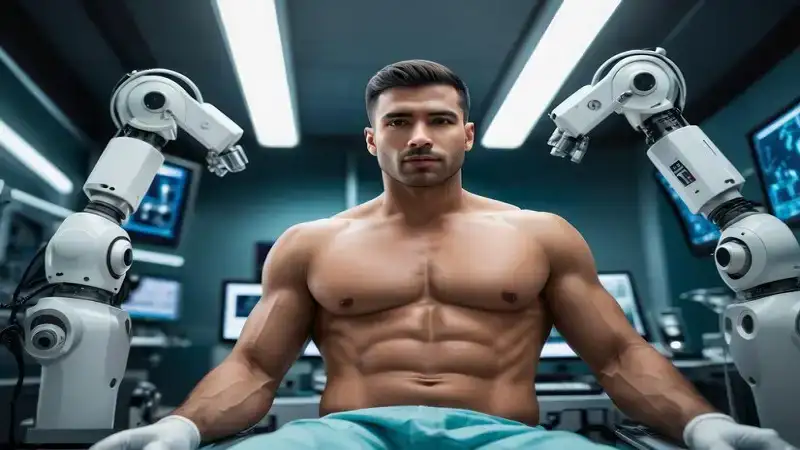Gynecomastia is a condition that affects many men. It leads to the development of enlarged breast tissue. The condition is often misunderstood. It can cause both physical discomfort and emotional stress. Understanding gynecomastia: causes, treatments, and empowering confidence in men is crucial to addressing the issue. This article will explore the causes, treatment options, and how men can regain confidence.
What is Gynecomastia?
Gynecomastia is the enlargement of male breast tissue. It occurs due to an imbalance between estrogen and testosterone. While it is more common during puberty, it can also affect men at any age. It is often confused with fat buildup in the chest area. However, true gynecomastia involves glandular tissue, not fat.
Causes of Gynecomastia
Gynecomastia can be triggered by various factors. One of the main causes is hormone imbalance. Testosterone levels decrease while estrogen levels rise. This leads to the growth of breast tissue. Hormonal changes during puberty are common. Other causes include certain medications, substance use, and medical conditions.
Hormonal Imbalance
Hormones play a critical role in gynecomastia. Testosterone helps maintain male characteristics, while estrogen regulates female traits. Men naturally have both hormones, but testosterone dominates. When estrogen levels increase, breast tissue can grow. This is the primary cause of gynecomastia in many cases.
Medications that Cause Gynecomastia
Some medications can cause gynecomastia. These include drugs used to treat heart disease, depression, and high blood pressure. Certain antibiotics and anti-androgens can also trigger the condition. It’s important to consult a doctor if you suspect your medication is causing breast tissue growth.
Substance Use and Gynecomastia
Certain substances can increase the risk of gynecomastia. These include alcohol, anabolic steroids, and drugs like marijuana. They disrupt the hormonal balance in the body, leading to breast tissue growth. Limiting or avoiding these substances can reduce the chances of developing the condition.
Medical Conditions Linked to Gynecomastia
Various health conditions can also lead to gynecomastia. Liver disease, kidney failure, and thyroid disorders are some examples. Tumors that affect hormone production can also cause the condition. It is essential to manage any underlying health issues to prevent or treat gynecomastia.
Psychological Impact of Gynecomastia
Gynecomastia can have a significant psychological impact. Men with enlarged breasts often feel self-conscious. They may avoid social situations or physical activities, like swimming. This can lead to low self-esteem and even depression. Understanding gynecomastia: causes, treatments, and empowering confidence in men can help them deal with the emotional toll of the condition.
Diagnosis of Gynecomastia

If you suspect gynecomastia, it’s important to get a proper diagnosis. A doctor will perform a physical examination. They may also order blood tests and imaging studies to determine the cause. Identifying the underlying reason is crucial for effective treatment.
Treatment Options for Gynecomastia
There are several treatment options for gynecomastia. These range from lifestyle changes to surgery. The right treatment depends on the severity of the condition and its underlying cause. Here’s a look at some of the most common treatments.
Lifestyle Changes
For mild cases, lifestyle changes may be enough. This includes a healthy diet and regular exercise. Reducing alcohol intake and avoiding drugs like marijuana and steroids can also help. Some men may see an improvement with these changes alone.
Medications for Gynecomastia
In some cases, medications may be prescribed. These drugs help to balance hormone levels. Examples include anti-estrogens and aromatase inhibitors. They work by reducing estrogen levels or blocking its effects. Medications are most effective when started early in the development of gynecomastia.
Surgery for Gynecomastia
For more severe cases, surgery may be necessary. There are two types of surgery used to treat gynecomastia: liposuction and mastectomy. Liposuction removes excess fat, while mastectomy removes glandular tissue. Surgery provides a more permanent solution and is often recommended when other treatments fail.
Liposuction
Liposuction is a common treatment for gynecomastia. It is less invasive and focuses on removing excess fat. The surgeon makes small incisions to insert a tube that suctions out the fat. Recovery time is shorter compared to other surgical methods.
Mastectomy
Mastectomy is another surgical option. It involves removing the glandular tissue responsible for gynecomastia. This procedure may be done through small incisions, making it less invasive. Mastectomy is more suitable for severe cases or when the condition persists despite other treatments.
Recovery and Aftercare
After surgery, recovery time varies. Most men can return to normal activities within a few weeks. However, physical exertion should be limited for the first few weeks. Wearing a compression garment can help reduce swelling and support healing. Following your doctor’s instructions is key to a smooth recovery.
Empowering Confidence After Gynecomastia
Dealing with gynecomastia can be challenging. However, it is possible to regain confidence. Understanding gynecomastia: causes, treatments, and empowering confidence in men is essential to overcoming the emotional hurdles. After treatment, many men feel more comfortable in their bodies. Building self-esteem is a gradual process but an achievable one.
Mental Health Support
For men struggling with the psychological effects of gynecomastia, mental health support is important. Speaking to a counselor or joining a support group can help. It allows men to share their experiences and learn coping strategies. Mental health professionals can also assist with building self-esteem.
Body Positivity and Acceptance
Body positivity plays a crucial role in empowering confidence. Men with gynecomastia should focus on accepting their bodies as they are. While treatment can help, it’s important to foster a healthy mindset. This involves embracing imperfections and understanding that everyone’s body is different.
The Importance of Education and Awareness
Raising awareness about gynecomastia is vital. Many men feel isolated because they believe they are the only ones affected. However, gynecomastia is quite common. Education helps reduce the stigma associated with the condition. Understanding gynecomastia: causes, treatments, and empowering confidence in men can help men take control of their health.
Conclusion
Gynecomastia can be a challenging condition to deal with, but it is treatable. Understanding gynecomastia: causes, treatments, and empowering confidence in men is key to managing both the physical and emotional effects. Whether through lifestyle changes, medication, or surgery, there are options available. The journey to regaining confidence starts with understanding and seeking the right support.
